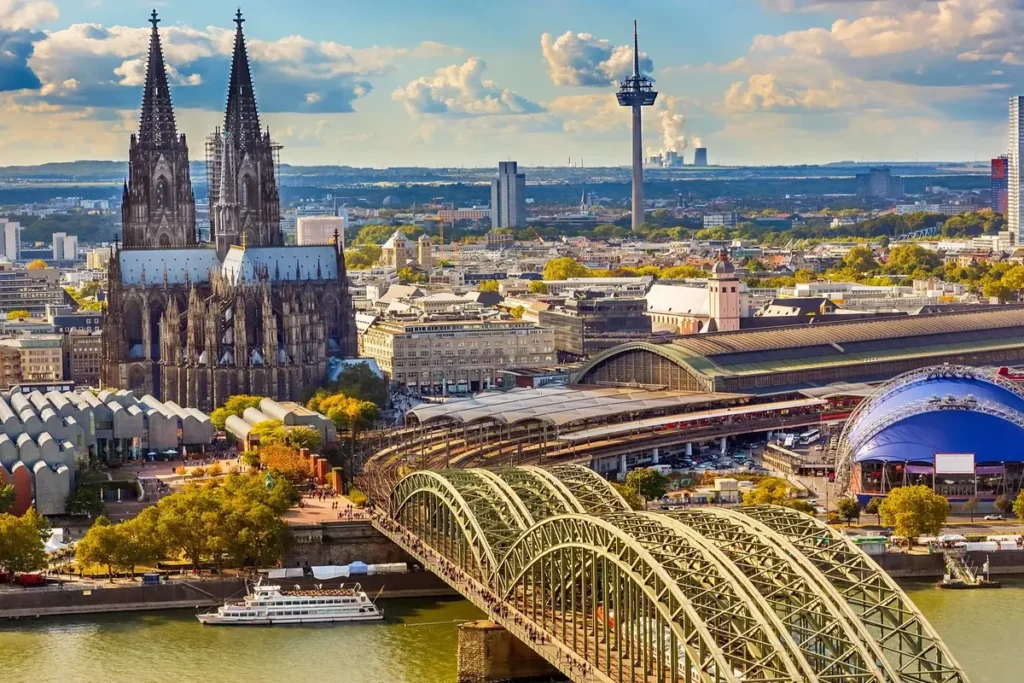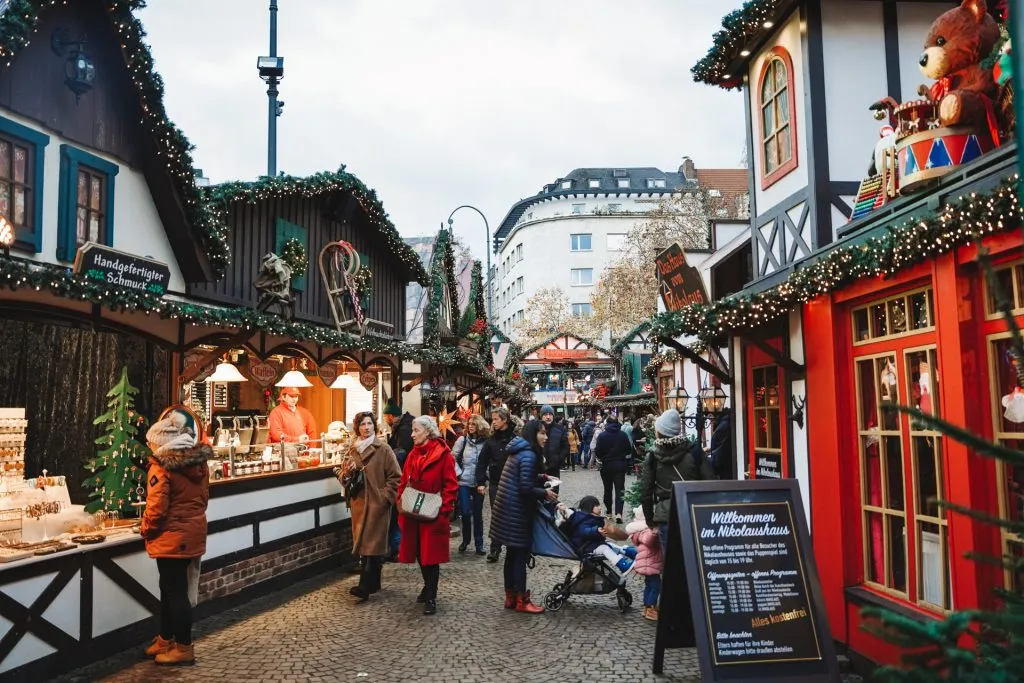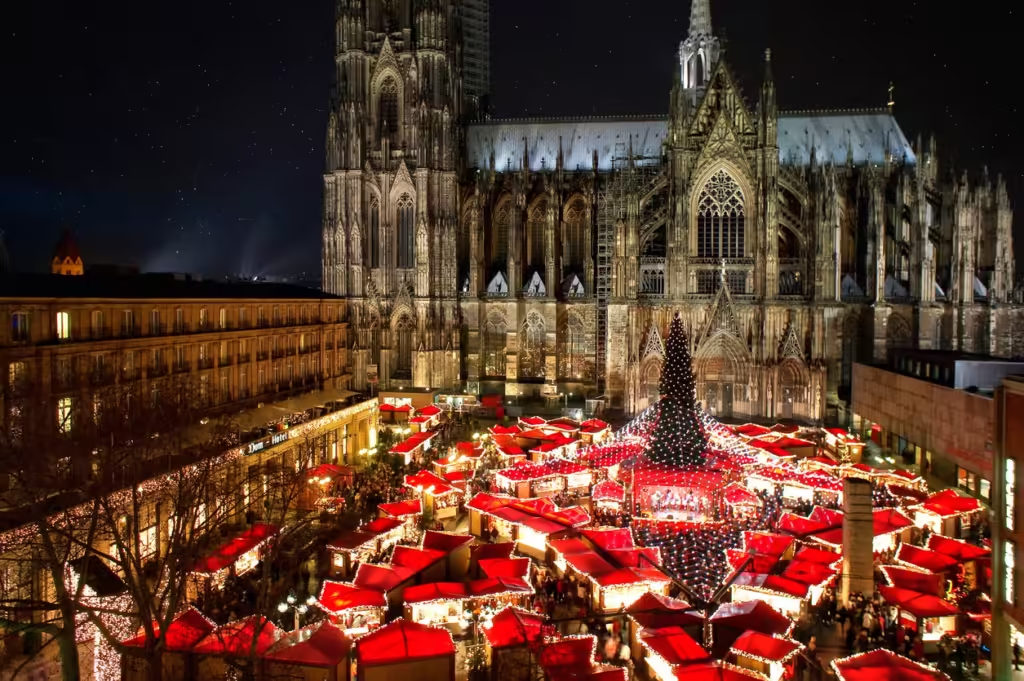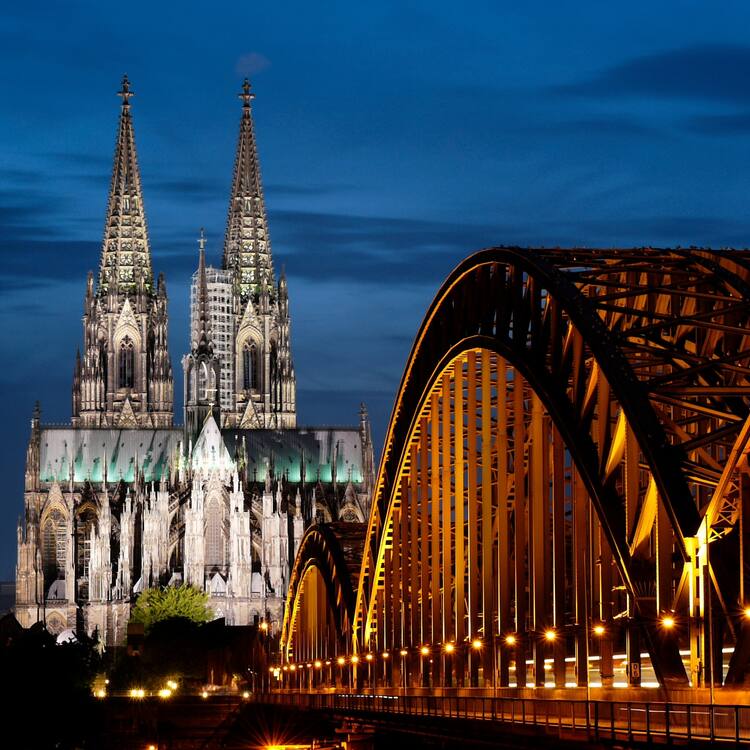Cologne Germany A Journey Through History Culture, and Modern Charm

Cologne, Germany: A Journey Through History, Culture, and Modern Charm
Welcome to Cologne, Germany’s fourth-largest city and one of the oldest in the country, where history, culture, and modern vibrancy blend seamlessly. Nestled along the banks of the River Rhine, Cologne (Köln in German) is renowned for its stunning architecture, rich history, and a plethora of attractions that make it a must-visit destination for travelers. This comprehensive guide provides everything you need to know for an enriching visit to Cologne, including its history, key attractions, unique features, and practical information for tourists.

A Glimpse into the History of Cologne
Early Beginnings
Cologne’s history dates back over 2,000 years, making it one of Germany’s most historically significant cities.
- Roman Roots: Cologne was founded by the Romans in 50 AD as Colonia Claudia Ara Agrippinensium, named after Agrippina the Younger, the mother of Emperor Nero. The city’s strategic location along the Rhine River made it a vital military and trade hub in the Roman Empire.
- Medieval Prosperity: During the Middle Ages, Cologne flourished as a major center of trade and ecclesiastical power. It was a free imperial city and a significant member of the Hanseatic League, which facilitated its growth as a wealthy and influential city.
World War II and Reconstruction
Cologne, like many German cities, was heavily bombed during World War II, resulting in extensive destruction.
- Destruction and Loss: The city endured 262 air raids, which left much of Cologne in ruins. Despite the devastation, the iconic Cologne Cathedral remarkably survived the bombings.
- Post-War Rebuilding: After the war, Cologne underwent extensive reconstruction. The city was carefully rebuilt, blending modern architecture with restored historical buildings, which created the unique urban landscape seen today.
Key Attractions of Cologne
Cologne Cathedral (Kölner Dom)
Cologne Cathedral is the city’s most famous landmark and a UNESCO World Heritage site, attracting millions of visitors each year.
- Gothic Masterpiece: The cathedral is a stunning example of Gothic architecture, with its twin spires towering at 157 meters, making it the tallest twin-spired church in the world.
- Relics of the Three Kings: The cathedral is home to the Shrine of the Three Kings, a gilded sarcophagus said to contain the relics of the Magi, making it an important pilgrimage site.
- Climbing the Spires: Visitors can climb the 533 steps to the top of the south tower for breathtaking panoramic views of the city and the Rhine River.

Old Town (Altstadt)
Cologne’s Old Town is a charming area filled with narrow cobblestone streets, colorful houses, and historic buildings.
- Alter Markt and Heumarkt: These two squares are the heart of the Old Town, surrounded by traditional beer halls, cafes, and shops. During the winter, they host the city’s famous Christmas markets.
- Historic Churches: The Old Town is home to several beautiful Romanesque churches, including Groß St. Martin and St. Andreas, which showcase Cologne’s rich ecclesiastical history.
- Rhine Promenade: Stroll along the Rhine Promenade, where you can enjoy scenic views of the river, the Hohenzollern Bridge, and the passing boats.
Hohenzollern Bridge and Love Locks
The Hohenzollern Bridge is one of Cologne’s most iconic structures, known for its love locks tradition.
- Bridge of Locks: Couples from around the world attach padlocks to the bridge’s railing as a symbol of their love, and then throw the keys into the Rhine River below.
- Stunning Views: The bridge offers spectacular views of Cologne Cathedral and the city skyline, making it a popular spot for photography.
Museum Ludwig
Museum Ludwig is one of Europe’s leading art museums, renowned for its collection of modern art.
- Modern Art Collection: The museum houses an extensive collection of 20th and 21st-century art, including works by Pablo Picasso, Andy Warhol, Roy Lichtenstein, and German Expressionists.
- Pop Art and Surrealism: The museum’s Pop Art collection is particularly impressive, as well as its exhibits on Surrealism and Abstract Expressionism.
- Contemporary Exhibits: Museum Ludwig also features rotating contemporary art exhibitions, making it a dynamic cultural destination.
Cologne Chocolate Museum (Schokoladenmuseum)
The Cologne Chocolate Museum is a delightful destination for chocolate lovers of all ages.
- Chocolate History: The museum explores the 3,000-year history of chocolate, from its origins with the ancient Maya and Aztec civilizations to its modern-day production.
- Interactive Exhibits: Visitors can see how chocolate is made, from the processing of cocoa beans to the production of chocolate bars. The museum even has a functioning chocolate factory where you can sample fresh chocolate.
- Chocolate Fountain: One of the museum’s highlights is the large chocolate fountain, where visitors can dip wafers into the flowing chocolate for a sweet treat.
Cologne Zoo
Cologne Zoo is one of the oldest and most popular zoos in Germany, offering a fun and educational experience for visitors.
- Diverse Wildlife: The zoo is home to over 10,000 animals representing more than 800 species, including elephants, lions, tigers, and penguins.
- Aquarium and Terrarium: The zoo’s aquarium and terrarium feature a variety of aquatic life, reptiles, and amphibians, with exhibits that include coral reefs, rainforest habitats, and venomous snakes.
- Historical Architecture: The zoo also boasts beautiful 19th-century architecture, including the elephant house and the owl castle, which add to its charm.

Unique Features of Cologne
Cologne Carnival
Cologne is famous for its vibrant and lively carnival, known as “Kölner Karneval,” which takes place every year in February or March.
- The Fifth Season: The carnival season officially begins on November 11th at 11:11 AM, but the main events occur during the week leading up to Ash Wednesday.
- Parades and Parties: The highlight of the carnival is the Rose Monday Parade (Rosenmontagszug), where elaborately decorated floats parade through the streets, and costumed revelers throw sweets and flowers to the crowd.
- Costumes and Music: Locals and visitors alike dress in colorful costumes, and the city comes alive with traditional carnival music, dances, and celebrations.
Kölsch Beer
Cologne is renowned for its Kölsch beer, a light, crisp beer brewed only in Cologne and its surrounding area.
- Beer Culture: Kölsch is traditionally served in small, 200ml glasses known as “Stangen.” Waiters, called “Köbes,” continuously refill your glass until you place a coaster on top to indicate you’ve had enough.
- Brauhaus Experience: A visit to one of Cologne’s many traditional beer halls (Brauhaus) is a must, where you can enjoy Kölsch along with hearty German cuisine like bratwurst, sauerkraut, and potato pancakes (Reibekuchen).
Practical Information for Tourists
Getting There
Cologne is a major transportation hub, making it easily accessible by various modes of transportation.
- By Air: Cologne Bonn Airport (CGN) is located about 15 kilometers southeast of the city center, with flights from major European cities and some international destinations. From the airport, you can take a train or taxi to the city center.
- By Train: Cologne is well-connected by train, with frequent high-speed services from major German cities like Berlin, Frankfurt, and Munich, as well as international connections from cities like Brussels, Paris, and Amsterdam. Cologne’s main train station (Köln Hauptbahnhof) is conveniently located next to the cathedral.
- By Road: Cologne is easily accessible by car, with well-maintained highways connecting it to other major cities in Germany and neighboring countries. Several parking garages are available throughout the city center.
Getting Around
Cologne’s public transportation system is efficient and easy to navigate, making it convenient to explore the city.
- Public Transport: The city has an extensive network of trams, buses, and trains (S-Bahn and U-Bahn) that connect all major attractions. Single tickets, day passes, and group tickets are available for purchase at ticket machines or on mobile apps.
- Biking: Cologne is a bike-friendly city with many bike lanes and rental options. Renting a bike is a great way to explore the city at your own pace.
- Walking: Many of Cologne’s top attractions are within walking distance of each other, particularly in the Old Town area. Walking is a pleasant way to experience the city’s atmosphere and discover hidden gems.
Accommodation
Cologne offers a wide range of accommodation options to suit all budgets, from luxury hotels to budget hostels.
- Luxury Hotels: For a luxurious stay, consider booking a room at the Excelsior Hotel Ernst, a five-star hotel located near Cologne Cathedral, or the Hyatt Regency, which offers stunning views of the Rhine River and the Old Town.
- Boutique Hotels: If you prefer something more intimate, there are plenty of boutique hotels in Cologne, such as The Qvest, a stylish hotel set in a neo-Gothic building, or Stern am Rathaus, a charming hotel with personalized service.
- Budget Options: For budget-conscious travelers, Cologne has numerous hostels and budget hotels, such as the Jugendherberge Köln-Deutz, a modern hostel near the Rhine River, or the A&O Köln Hauptbahnhof, conveniently located near the train station.
Dining and Shopping in Cologne
Dining Options
Cologne offers a diverse culinary scene, from traditional German fare to international cuisine.
- Traditional Cuisine: Enjoy a hearty meal at one of Cologne’s traditional beer halls, where you can try dishes like Sauerbr
aten (marinated pot roast), Himmel un Ääd (mashed potatoes with apple sauce and black pudding), and Kölsche Kaviar (blood sausage with onions).
- International Cuisine: Cologne is home to a wide variety of international restaurants, offering everything from Italian and Asian to Middle Eastern and American cuisine.
- Street Food: Don’t miss trying the local street food, such as currywurst (sliced sausage with curry ketchup) and döner kebab, which are popular among locals and visitors alike.
Shopping in Cologne
Cologne offers a wide range of shopping experiences, from high-end boutiques to local markets.
- Schildergasse and Hohe Straße: These two shopping streets are among the busiest in Europe, lined with department stores, fashion boutiques, and specialty shops. Here, you’ll find everything from luxury brands to popular high-street retailers.
- Belgian Quarter (Belgisches Viertel): For unique and trendy finds, head to the Belgian Quarter, where you’ll discover independent boutiques, vintage shops, and concept stores. The area is also known for its vibrant café culture and street art.
- Cologne Christmas Markets: If you’re visiting during the winter, don’t miss Cologne’s famous Christmas markets, particularly the one in front of the cathedral. These markets offer a magical holiday experience with handmade crafts, seasonal treats, and festive decorations.
Must-See Highlights at Cologne
Cologne Cathedral (Kölner Dom)
Cologne Cathedral is the city’s most famous landmark and a UNESCO World Heritage site, attracting millions of visitors each year.
- Gothic Masterpiece: The cathedral is a stunning example of Gothic architecture, with its twin spires towering at 157 meters, making it the tallest twin-spired church in the world.
- Relics of the Three Kings: The cathedral is home to the Shrine of the Three Kings, a gilded sarcophagus said to contain the relics of the Magi, making it an important pilgrimage site.
- Climbing the Spires: Visitors can climb the 533 steps to the top of the south tower for breathtaking panoramic views of the city and the Rhine River.
Old Town (Altstadt)
Cologne’s Old Town is a charming area filled with narrow cobblestone streets, colorful houses, and historic buildings.
- Alter Markt and Heumarkt: These two squares are the heart of the Old Town, surrounded by traditional beer halls, cafes, and shops. During the winter, they host the city’s famous Christmas markets.
- Historic Churches: The Old Town is home to several beautiful Romanesque churches, including Groß St. Martin and St. Andreas, which showcase Cologne’s rich ecclesiastical history.
- Rhine Promenade: Stroll along the Rhine Promenade, where you can enjoy scenic views of the river, the Hohenzollern Bridge, and the passing boats.
Hohenzollern Bridge and Love Locks
The Hohenzollern Bridge is one of Cologne’s most iconic structures, known for its love locks tradition.
- Bridge of Locks: Couples from around the world attach padlocks to the bridge’s railing as a symbol of their love, and then throw the keys into the Rhine River below.
- Stunning Views: The bridge offers spectacular views of Cologne Cathedral and the city skyline, making it a popular spot for photography.
Museum Ludwig
Museum Ludwig is one of Europe’s leading art museums, renowned for its collection of modern art.
- Modern Art Collection: The museum houses an extensive collection of 20th and 21st-century art, including works by Pablo Picasso, Andy Warhol, Roy Lichtenstein, and German Expressionists.
- Pop Art and Surrealism: The museum’s Pop Art collection is particularly impressive, as well as its exhibits on Surrealism and Abstract Expressionism.
- Contemporary Exhibits: Museum Ludwig also features rotating contemporary art exhibitions, making it a dynamic cultural destination.
Cologne Chocolate Museum (Schokoladenmuseum)
The Cologne Chocolate Museum is a delightful destination for chocolate lovers of all ages.
- Chocolate History: The museum explores the 3,000-year history of chocolate, from its origins with the ancient Maya and Aztec civilizations to its modern-day production.
- Interactive Exhibits: Visitors can see how chocolate is made, from the processing of cocoa beans to the production of chocolate bars. The museum even has a functioning chocolate factory where you can sample fresh chocolate.
- Chocolate Fountain: One of the museum’s highlights is the large chocolate fountain, where visitors can dip wafers into the flowing chocolate for a sweet treat.

Conclusion
Cologne, with its rich history, stunning architecture, vibrant cultural scene, and welcoming atmosphere, offers an unforgettable experience for all who visit. From the majestic Cologne cathedral and the charming Old Town to the modern art of Museum Ludwig and the sweet delights of the Chocolate Museum, the city provides a diverse range of attractions that cater to every interest. Plan your trip to Cologne and immerse yourself in the beauty, history, and modern charm of this remarkable German city. Embrace the opportunity to explore, discover, and create lasting memories in one of Europe’s most beloved destinations.




1 Comment
[…] article delves into the history, architectural significance, cultural impact, and tourist appeal of Cologne Cathedral, providing a detailed guide for anyone interested in this magnificent […]